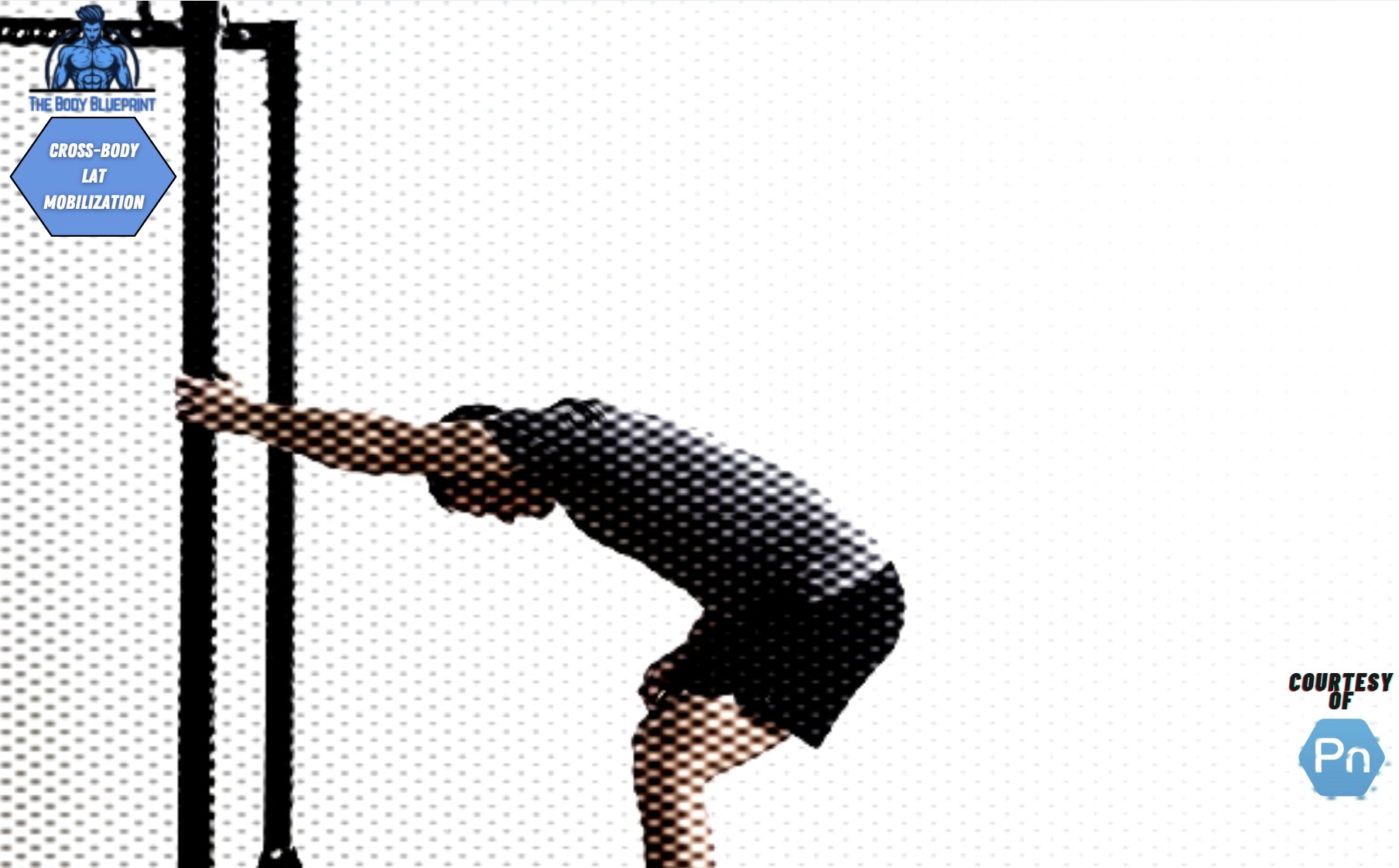When you think of mobility, what comes to mind? Stretching? Foam rolling? Maybe a quick warm-up before hitting the weights? The truth is, true mobility—the kind that turns you into a powerhouse—goes deeper. Enter Cross-Body Lat Mobilization: the game-changing movement you’ve probably been skipping. If your lats are locked up, your overhead presses, pull-ups, or even your bench game can suffer. Let’s fix that.
What Is Cross-Body Lat Mobilization?
It’s a specific movement designed to release tension in the latissimus dorsi (your lats). These muscles are the largest in your back and play a critical role in upper-body strength and mobility. When tight, they limit your range of motion, affecting everything from shoulder health to power output.
Why It Works:
- Targets restrictions in the fascia surrounding the lats.
- Enhances cross-body coordination (key for sports like boxing, tennis, or swimming).
- Relieves shoulder impingement by creating more space in your joints.
Signs Your Lats Are Holding You Back
How do you know if your lats need some TLC? Look for these common indicators:
- Struggling to reach overhead without arching your back.
- Pain or tightness during pull-ups or rows.
- Poor posture—shoulders rounding forward, chest collapsing.
- Reduced performance in pushing or pulling exercises.
| Symptom | Possible Lat Issue |
|---|---|
| Limited overhead reach | Lat tightness restricting shoulder flexion |
| Shoulder pain during lifts | Overactive lats causing joint imbalance |
| Rounded shoulders | Tight lats pulling on the upper spine |
Performing Cross-Body Lat Mobilization
Ready to dig into the technique? Here’s a step-by-step breakdown:
- Set Up:
- Grab a foam roller or lacrosse ball.
- Lie on your side with your arm extended overhead, palm up.
- Position the Tool:
- Place the foam roller or ball under your lat, just below your armpit.
- Cross-Body Movement:
- Slowly roll forward and back, letting the tool work into the muscle.
- Gradually add cross-body movement by reaching your opposite arm toward your hip.
- Breathe and Relax:
- Focus on deep breathing to encourage muscle release.
| Step | Details |
|---|---|
| Tool Placement | Under the armpit, targeting the lats |
| Rolling Motion | Forward/backward, incorporating cross-body reach |
| Duration | 1-2 minutes per side |
Benefits of Cross-Body Lat Mobilization
Unlocking your lats pays off in more ways than one. Here’s why you’ll want to make this a non-negotiable part of your routine:
- Improved Shoulder Mobility: No more fighting for range during overhead presses.
- Enhanced Strength Output: Freeing up your lats lets other muscles fire more efficiently.
- Better Posture: Release tension that’s pulling your shoulders out of alignment.
- Reduced Risk of Injury: A mobile body is a resilient body.
When to Use Cross-Body Lat Mobilization
Timing is everything. Here’s how to work this into your routine for maximum gains:
- Pre-Workout: Loosen up your lats before upper-body days.
- Post-Workout: Speed up recovery and address tension from heavy lifts.
- Active Rest Days: Use it as part of a dedicated mobility session.
Pro Tip: Pair this with other mobilization drills, like T-spine extensions or scapular work, for a total upper-body reset.
Lat Mobilization Mistakes to Avoid
Even the best tools can backfire if used incorrectly. Watch out for these common errors:
- Going Too Hard, Too Fast: Mobilization is not about pain—ease into it.
- Skipping Breathing: Breathwork helps signal your nervous system to relax.
- Ignoring Symmetry: Always work both sides equally, even if one feels tighter.
The Cross-Body Lat Mobilization Routine
Want a plug-and-play routine? Here’s one to get you started:
| Day | Drill | Duration |
|---|---|---|
| Monday | Cross-Body Lat Mobilization | 2 min/side |
| Wednesday | Lat Mobilization + T-Spine Work | 2 min/side |
| Friday | Lat Mobilization + Band Stretches | 3 min/side |
FAQs About Cross-Body Lat Mobilization
Q: Can this replace stretching for my lats?
A: Not quite. Mobilization drills are more targeted for releasing restrictions, while stretching helps improve flexibility. Use both for best results.
Q: How often should I do this?
A: Start with 2-3 times per week, then adjust based on how your body responds.
Q: Can I use a massage gun instead of a foam roller?
A: Absolutely. Just make sure to move slowly and avoid pressing too hard into the muscle.
Closing Thoughts
Your lats are the unsung heroes of upper-body performance, but they can also be your biggest limitation if left unchecked. Cross-Body Lat Mobilization is your golden ticket to unlocking pain-free movement, crushing PRs, and feeling like an all-around beast in the gym.
Now, grab that foam roller and get to work—you’ve got this!

